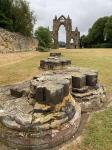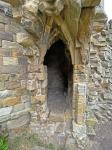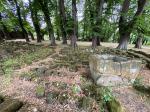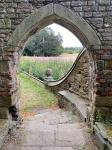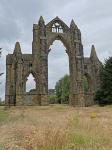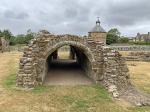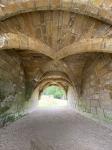Gisborough Priory
Gisborough Priory is situated at the east end of Westgate, the town's main street, beside St Nicholas Church. It was One of the first Augustinian priories to be built in England, founded in 1119 as the Priory of St Mary by the Norman feudal magnate Robert de Brus, also an ancestor of the Scottish king, Robert the Bruce. It became one of the richest monastic foundations in England with grants from the crown and bequests from de Brus, other nobles and gentry and local people of more modest means. Much of the Romanesque Norman priory was destroyed in a fire in 1289. It was rebuilt in the Gothic style on a grander scale over the following century.
The priory prospered until the Dissolution of the Monasteries in 1540, when it was abolished along with England's other monastic communities. The priory buildings were demolished, and the stone re-used in other buildings in Guisborough. By the end of the 19th century the east end of the priory church was left standing with its great window forming a distinctive arch, a well-known landmark used as a symbol for Guisborough.
It became part of the estate of the Chaloner family when Sir Thomas Chaloner bought the Guisborough Monastic Estate from the Crown in about 1570. The east window was preserved by them as part of a romantic vista adjoining their seat, Gisborough Hall, (Now Gisborough Hall Hotel) from which the priory takes its name. The priory is owned by the Chaloners but is in the care of English Heritage as a scheduled monument. Today its ruins are regarded as among the finest surviving examples of early Gothic architecture in England. The adjoining Priory Gardens were laid out by the Chaloners in the 18th century.
The priory ruins and gardens are open to the public throughout the year.
|


